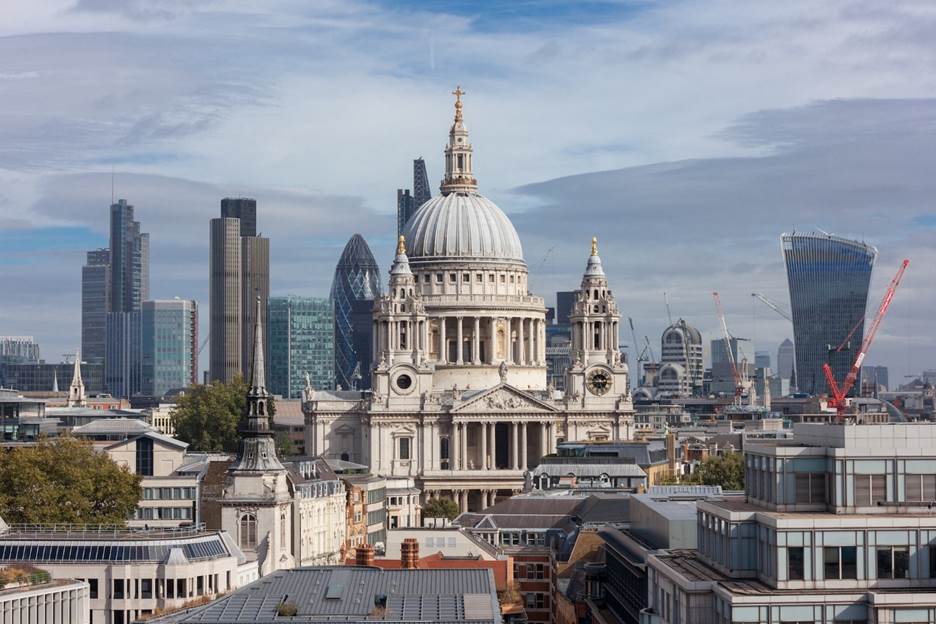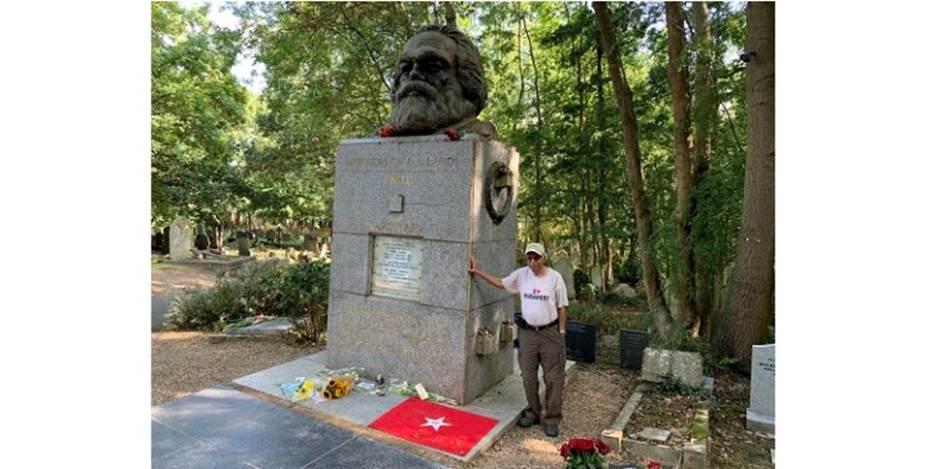
In 1978, there were no skyscrapers in London, but over the past twenty years there has been a proliferation of skyscrapers with funny names like Gherkin (cucumber); Cheese Grater; Scalpel; Shard; Walkie Talkie, etc.
Seeing London again after Four Decades
By Dr Khalid Siddiqui
Ohio

After a gap of more than 44 years, I decided to revisit London in August 2022. The London of 2022 looked much different from the London of 1978.
Most desis have been visiting London every few years, so they might not have noticed the drastic changes that I experienced. There were some immigrants in London in 1978 also, but now the whole city seems to have been taken over by immigrants from every part of the world.
For the first time in my life, I met an Albanian, a Lithuanian and a Greek Cypriot in London. I was staying in a decent hotel, very close to Westminster Abbey, where not a single employee from the manager down to the porter was white Englishman.
There is a huge language issue because these immigrants, especially the East Europeans, can hardly speak any word of proper English. Another change I noticed was in the dress code. Gone are the days of formal dress pants, ties and jackets for men or dresses for women, but jeans, shorts and sandals everywhere.
I was there for seven days, all of it dedicated only to sightseeing from 9 am to 5 pm. To remain focused, I neither informed any of my Pakistani family members and/or friends in London of my visit, nor did I meet them. The only social meeting I had was with a long-time English friend Mr Keith Walmsley, who writes about cricket statistics, which is my interest also. I had invited him for dinner at my hotel.
I had engaged two proper English guides – one for the first five days and the second one for the last two days. Both the guides were fantastic and full of enthusiasm. The Lithuanian driver was also great. Driving in London tests your nerves. The roads are winding and narrow with traffic lights every few yards. The poor driver also had to constantly struggle between the unexpected and ubiquitous ‘no left-turn’ and ‘no-right turn’ signs. The London streets reminded me of Boston.
I was able to cover 90% of the items on my list, which was great. It is not possible to see everything in one visit because some buildings are closed for renovations, and some precious items (paintings, sculptures etc.) are on loan to the museums/galleries in the other countries. So, to cover it all, two visits, one year apart, are ideal if possible.
One frustration that the visitors from the USA face in London is the lack of access to toilets. In the USA, the toilets in any gas station, restaurant and motel/hotel are readily and freely available to the public. In London there used to be paid toilets which are almost all gone. There are a few dirty public toilets. Otherwise, toilets in any private business locations, like restaurants etc. are not open to non-customers. Even the customers have to obtain a numerical code from the manager to open the bathroom door. My guides, therefore, advised me to use the free and clean toilets available in the museums preemptively. Not surprisingly, there are long lines.

The author in London
In 1978, there were no skyscrapers in London, but over the past twenty years there has been a proliferation of skyscrapers with funny names like Gherkin (cucumber); Cheese Grater; Scalpel; Shard; Walkie Talkie, etc. The Canary Wharf and Central London are in competition to outdo each other – this is pretty obvious looking at the two sites across the River Thames from Greenwich.
The first thing that the English do in the morning is to check the weather forecast, but they don’t believe it! It was supposed to rain all seven days I was there, but it rained only one day, just for two hours!
There are two types of museums in London – public and private. The public museums are huge, full of precious artifacts that the British acquired/stole from their overseas colonies. The public museums are free and therefore very crowded. Some use it as a place for public outings. Children run around freely and the women, with babies in the stroller, socialize with one another.
Most of the museums are not air-conditioned, so it gets very stuffy during the summer months. Although the docents were available in every room, most of them were immigrants and unaware of the description of the artifacts under their charge. If my English guide would inquire about a particular piece, first of all they wouldn’t understand him and, if they did, they never could find it.
Many rich art collectors and entrepreneurs had visited the British colonies over the centuries looking for precious items. They brought it with them to England as their own private collections. After their death, their descendants either sold those artefacts to the museums or converted their houses into private museums. These museums, though small, charge a hefty entrance fee and, therefore, are less crowded. They are air-conditioned and maintained very well. I visited quite a few of them like Somerset House; Sir John Soane’s Museum; Pollock’s Toy Museum; Wallace Collection; Sherlock Holmes’ Museum; Geffrye Museum; Old Operating Theatre Museum; Apsley House; and Dr Johnson’s House. Some of the most interesting and unexpected items are found there.
Most of the museums and art galleries have no restrictions on photography which is very welcoming. This is in sharp contrast to the policy of many other European cities where photography in most of the museums and, specially, art galleries, is forbidden.
Another major change I noticed this time is the proliferation of fast-food restaurants – not only the popular American ones but their own indigenous ones. Pret A Manger is a sandwich shop chain, and one shop is literally found in every street corner. There are 273 in London, plus three “Veggie Prets,” which focus exclusively on vegetarian and vegan options.
One bit of good news: in March 2022, Cleveland Clinic (the institution I am affiliated with) opened an inpatient unit with 184 beds in London. The building at 33 Grosvenor Place, previously the headquarters of an energy company, was extensively renovated and redesigned to create a hospital environment. I saw the place. It is very impressive but still looks like a huge government office building.
Everyone and their grandmother have been to London numerous times, so it would be redundant to write about its main tourist attractions. However, from time to time, I will be writing about some of the unusual stuff I found in London, and the story behind it.

